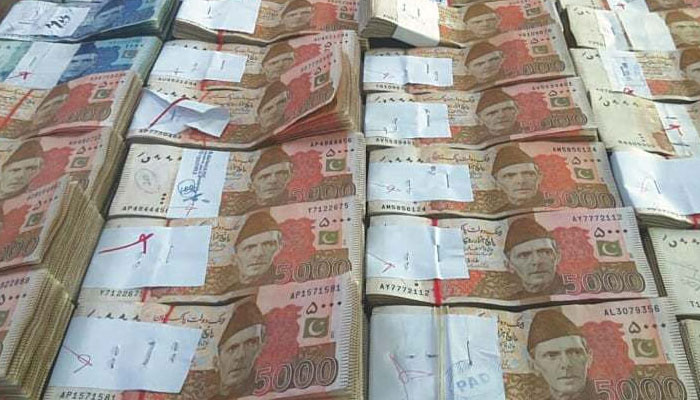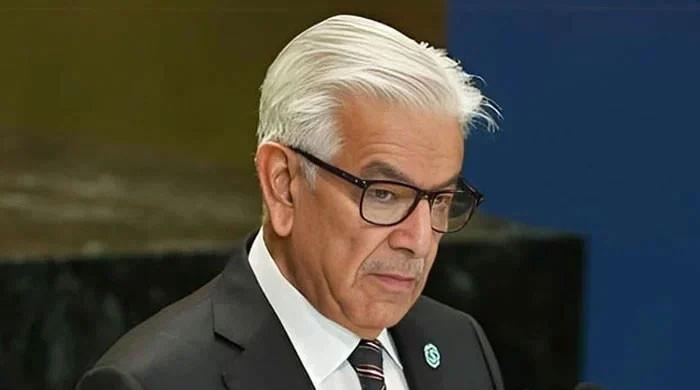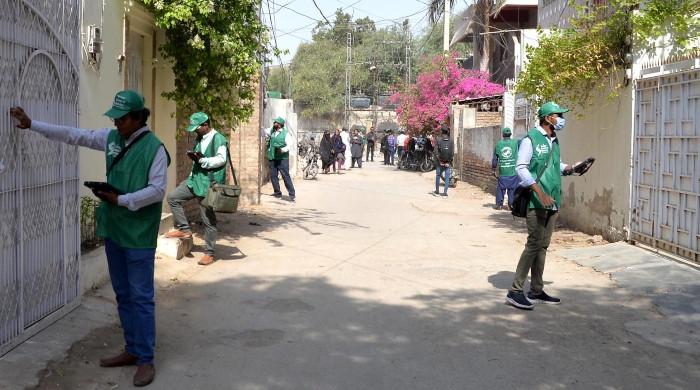Govt plans to borrow Rs6.7 trillion from banks in next three months
Planned borrowings are higher than October-December target of Rs5.875 trillion
October 31, 2021

- Government to borrow Rs5.450 trillion from auctions of market treasury bills (MTBs).
- SBP will sell Rs300 billion worth of fixed rate PIBs and Rs175 billion worth of five-year, and Rs175 billion worth of 10-year floating rate PIBs.
- The latest targets also reveal reliance on borrowing from PIBs, which is long-term and high.
KARACHI: In a bid to reduce the country’s fiscal deficit, the government is all set to borrow Rs5.750 trillion from the scheduled banks in the next three months (November-January) of 2021, The News reported.
It is pertinent to mention here that the planned borrowings are higher than the October-December target of Rs5.875 trillion.
The government will borrow Rs5.450 trillion from the auctions of market treasury bills (MTBs), while it also plans to attract Rs1 trillion through the sale of fixed and floating rate Pakistan Investment Bonds (PIBs).
SBP to sell PIBs
The State Bank of Pakistan (SBP) will sell Rs300 billion worth of fixed rate PIBs and Rs175 billion worth of five-year, and Rs175 billion worth of 10-year floating rate PIBs.
It will also auction Rs175 billion worth of a three-year and Rs175 two-year floating rate PIB.
The SBP will also sell Rs225 billion worth of variable rental rate five-year government of Pakistan Ijara Sukuk and Rs75 billion worth of fixed rental rate domestic Islamic bond.
The government adhered to its commitment of zero fresh borrowings from the SBP, so it is continually dependent on bank borrowing to meet its financing needs as foreign financing remained dried up due to the delay in the International Monetary Fund’s loan programme.
The auction calendar showed the major targets were allocated to long-term instruments. The latest targets also revealed the reliance on borrowing from PIBs, which is long-term and high.
Besides this, the government wants to raise its funding through issuing Shariah-compliant papers. So it has started to issue domestic sukuk on a regular basis just like conventional debt instruments. This will provide banks an avenue to park their surplus deposits.
During the last fiscal year, the government had kept its commitment to abstain from borrowing directly from the SBP, which has positive connotations for anchoring inflation expectations and self-discipline, according to the SBP’s annual performance review for FY2021.
“The SBP, in coordination with the government, also introduced new variants of Floating Rate Pakistan Investment Bonds (PFLs) and made revisions to the auction participation mechanism for PFLs to allow the government to meet its requirement from the market and increase the maturity profile of public debt,” the report said.
The country’s public debt stood at Rs39.77 trillion by the end of August. Public debt continued to rise due to the financing of the budget deficit, depreciation in the exchange rate, higher interest payments, Covid-related economic stimulus package and social safety programmes.
Funding requirement of the budget deficit is mainly met through the domestic market and within the domestic sources, a large portion of the financing is mobilised through long-term government securities, especially when there is zero borrowing from the SBP.
Domestic debt inched up 0.26 percent to Rs26.334 trillion at the end of August. It comprised the government securities, mostly held by commercial banks, and non-bank debt, such as National Saving Schemes, including prize bonds. A recent increase in the policy rate will elevate the government's cost of debt.
The debt accumulated via long-term instruments slightly fell to Rs19.041 trillion from Rs19.556 trillion, while the short-term debt rose to Rs7.238 trillion from Rs6.680 trillion, highlighting the government’s increasing reliance on short-term loans.











